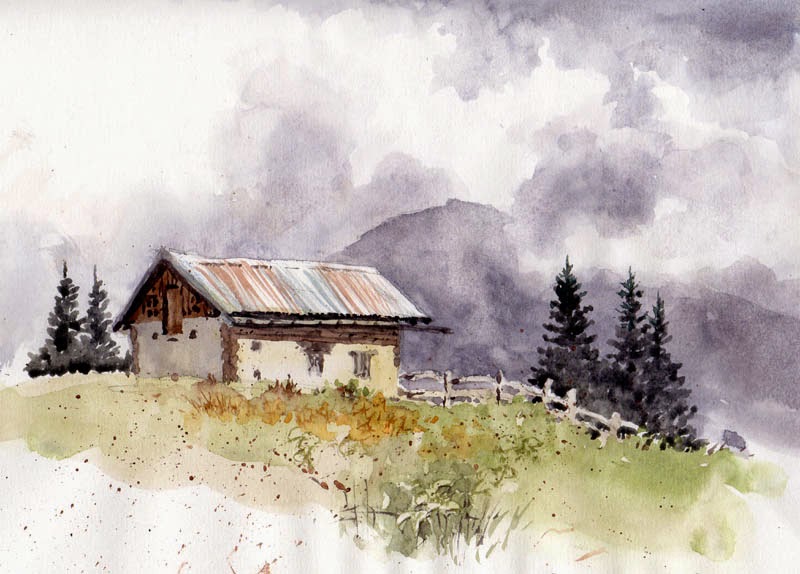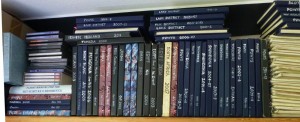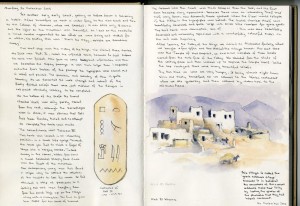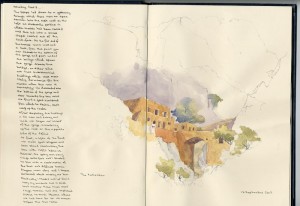As we pass from autumn into winter it’s a time of year when many artists seem to go into hibernation, especially if there are no local art classes to encourage them. When I wrote my latest book Winter Landscapes in Watercolour my aim was to encourage people to take a serious look at the countryside in winter, and if possible to get out and record the scenes in sketches or with a camera. The winter landscape can be breath-takingly beautiful, a time of year when you can find some of the most dramatic and often simple compositions that almost beg to be painted. So how do you make the most of this exciting time of year?
 If you keep an eye on the weather forecast you might get some idea of what’s to come, but they seem to get it so wrong so often that it pays to be prepared for those glorious days when conditions are just right, whether snow is on the ground or not. If it takes you an hour or more to get your art gear together then you may well have lost the best part of the day, so having all your kit ready for action is vital. As far as keeping warm and dry is concerned, you can see in the photo that I am wrapped up in a warm fleece jacket, a warm sheepskin hat, scarf and thin gloves in which I can sketch quite happily. My trousers are lined, I have woollen socks and boots, thermal vest and inside the rucsack is my waterproof outer gear, a long neck tube which can cover not just my neck but up over my head as well, if need be, a steel thermos flask, mug, etc, so that I can make soup, coffee, tea, cappuccinos, the lot. I’m there to enjoy myself, so why not?
If you keep an eye on the weather forecast you might get some idea of what’s to come, but they seem to get it so wrong so often that it pays to be prepared for those glorious days when conditions are just right, whether snow is on the ground or not. If it takes you an hour or more to get your art gear together then you may well have lost the best part of the day, so having all your kit ready for action is vital. As far as keeping warm and dry is concerned, you can see in the photo that I am wrapped up in a warm fleece jacket, a warm sheepskin hat, scarf and thin gloves in which I can sketch quite happily. My trousers are lined, I have woollen socks and boots, thermal vest and inside the rucsack is my waterproof outer gear, a long neck tube which can cover not just my neck but up over my head as well, if need be, a steel thermos flask, mug, etc, so that I can make soup, coffee, tea, cappuccinos, the lot. I’m there to enjoy myself, so why not?
My sketching gear varies from time to time, but in less-than perfect conditions it’s best to keep it really simple so that you can work speedily. I mainly sketch on hardback cartridge books, even in watercolour, as it dries quickly on the smooth paper unless conditions are truly damp. I take several soft-grade pencils along, including water-soluble ones which can suggest a lovely mood. They are especially effective for suggesting snow conditions. A range of four or five brushes is adequate, and often I use just one on a sketch. I also carry around a plastic aquash brush which holds its own water reservoir in the handle. You only need a few colours. I prefer half-pans when working out of doors, rather than tubes, as they are all ready for action once I open the box, which has its own integral palette.
Finally, it’s also a great idea to have some plan of where you intend to go. I like to plan for different locations for different conditions. If the heavy rain has stopped, seeking out waterfalls in spate might be worthwhile. Hoar frost on trees may not settle for long, so in that case it would be vital to be out quickly into the trees. Snow can totally transform all kinds of landscape, which can give you a wide choice, but a thin covering can quickly disappear, and it may be all you get all winter!
One last tip: try to get a 20-minute walk in before you sketch and you’ll find you can cope much easier than if you just stumble out of the warm car to start sketching or painting. So, with winter upon us, now is the time to sort out all that gear and be ready for those good days. Don’t forget, afterwards you can treat yourself to tea and cakes and really feel you’ve achieved something. Oh, and don’t forget that camera…..







